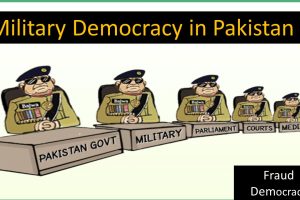By Saim Saeed
First witness reports testify that Wednesday (May 13) morning’s attack in Karachi on a Shia Ismaili bus was conducted with precision.
Eight attackers boarded the bus, purportedly dressed in security uniforms. They subdued the driver and instructed the passengers to lower their heads. Then, starting from the back, the attackers shot them in the heads at point blank range with 9mm pistols. In all, they killed 43 people. A security officer told the Dawn newspaper, “One young girl hid and survived. Three or four others who were brought to the hospital have survived…the rest are all dead.”
The attack is hardly unprecedented.
In January, a suicide bomber killed 61 people at a Shia mosque in the nearby town of Shikarpur. Shias across the country—from the shores of Karachi to the mountains of Gilgit—are experiencing sustained, targeted persecution, whether in massive attacks like this, or ritual assassinations by militant groups, many of which are tolerated, if not supported, by the state.
Despite being Muslims (unlike Ahmadis, the state has not declared Shias to be non-Muslims yet), their persecution has implied that Shias, about 20% of Pakistan’s population, fit snugly as “religious minorities” with the Christians, Hindus, and Ahmadis.
Ismailis in Pakistan are an influential, well-knit community known for operating hospitals, universities, schools, charities and infrastructure projects. Their spiritual leader is the Aga Khan, who summarily condemned the attack.
Beyond the immediate barbarity and shock (if not surprise), Wednesday morning’s attack also highlights the increasing limitation of Pakistani militant groups.
Like the school attack in Peshawar last December, the attackers chose a soft target; in this case, an unguarded bus. That’s perhaps because major fortifications and security overhauls have been undertaken in government buildings, cantonment areas, mosques, markets, schools, and other public places.
Coupled with a sustained military operation in Pakistan’s tribal areas and a joint paramilitary and police operation in Karachi, security forces have managed to bring down the number of terrorist attacks and targeted killings, and the resulting fatalities.
Alternatively, it has made the most vulnerable and defenceless—passengers going to work—militants’ preferred targets. These kinds of attacks are more difficult to defend against, and possibly unlikely to stop.
Nonetheless, the attack revealed security lapses on a local and provincial level. The longtime chief minister of Sindh, Qaim Ali Shah, of the Pakistan Peoples Party has come under fire for the spiralling violence and extremism that has markedly increased in his province under his watch.
A spate of kidnappings, threats, vandalism, and killings—including the Shikarpur blast—have all added to the perception that Sindh, historically known for its religious diversity, is slipping into the same radical ideology that has engulfed other parts of the country. Shah suspended local officers of the Sindh Police (another institution under scrutiny) pending an investigation, while the usual rounds of empty condemnation have poured in from other politicians.
But there’s a bigger problem: Both the armed forces and Pakistan’s civilian government are yet to confront the ideology that drives these attacks.
Malik Ishaq, the founder of Lashkar-e-Jhangvi, perhaps the deadliest of the anti-Shia militias, oscillates between incarceration and freedom; Lashkar-e-Taiba leader Hafiz Saeed roams free under government protection. Media commentators still point to India and the US as Pakistan’s biggest threats.
Meanwhile, educationist Bernadette Dean fled after receiving threats to her life. And last month’s murder of Sabeen Mahmud indicates that free expression, diversity, and secular values are still anathema to the particular version of the Pakistani state that militants, and some sections of the government itself, envision.
Both the civilians and the military should know that military action forms only one face of a multifaceted approach that must also include reforms in education, intelligence gathering, foreign policy, and institution building.
Till then, the attacks will continue.
The article was originally published in Quartz.




